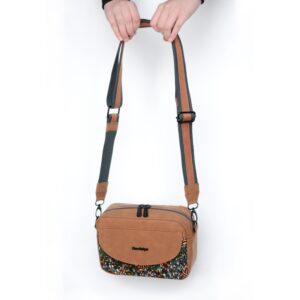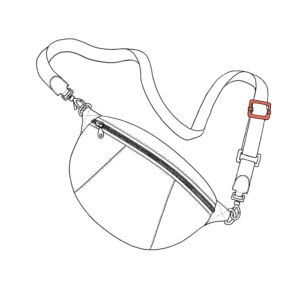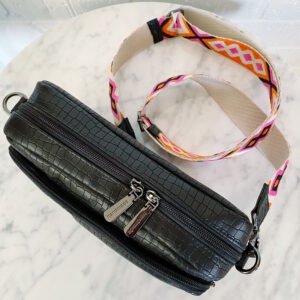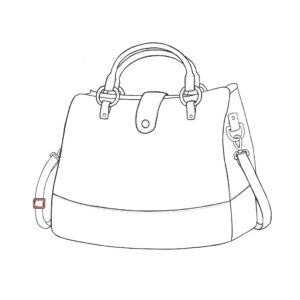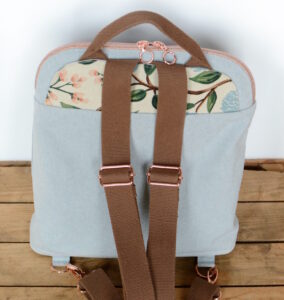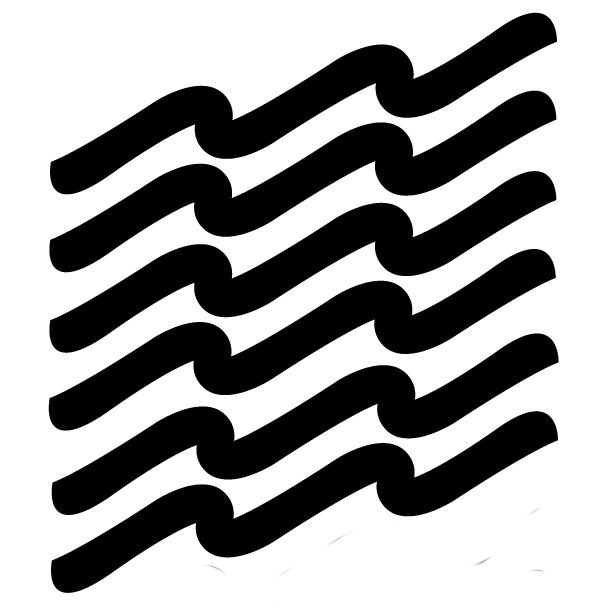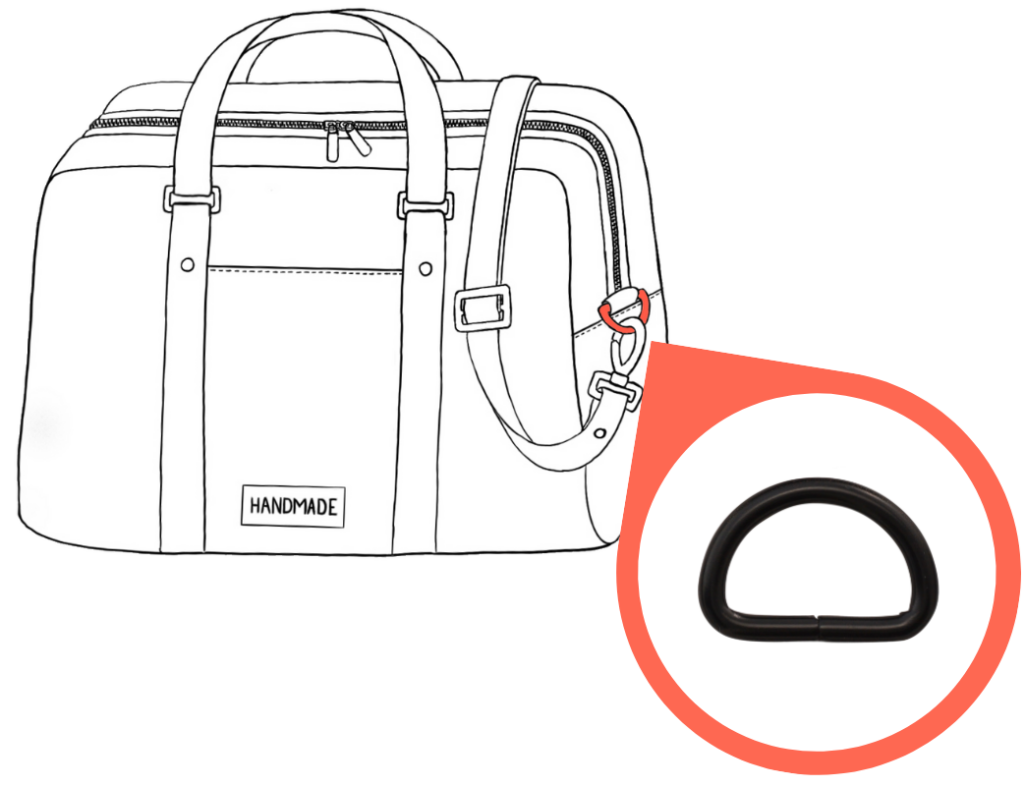

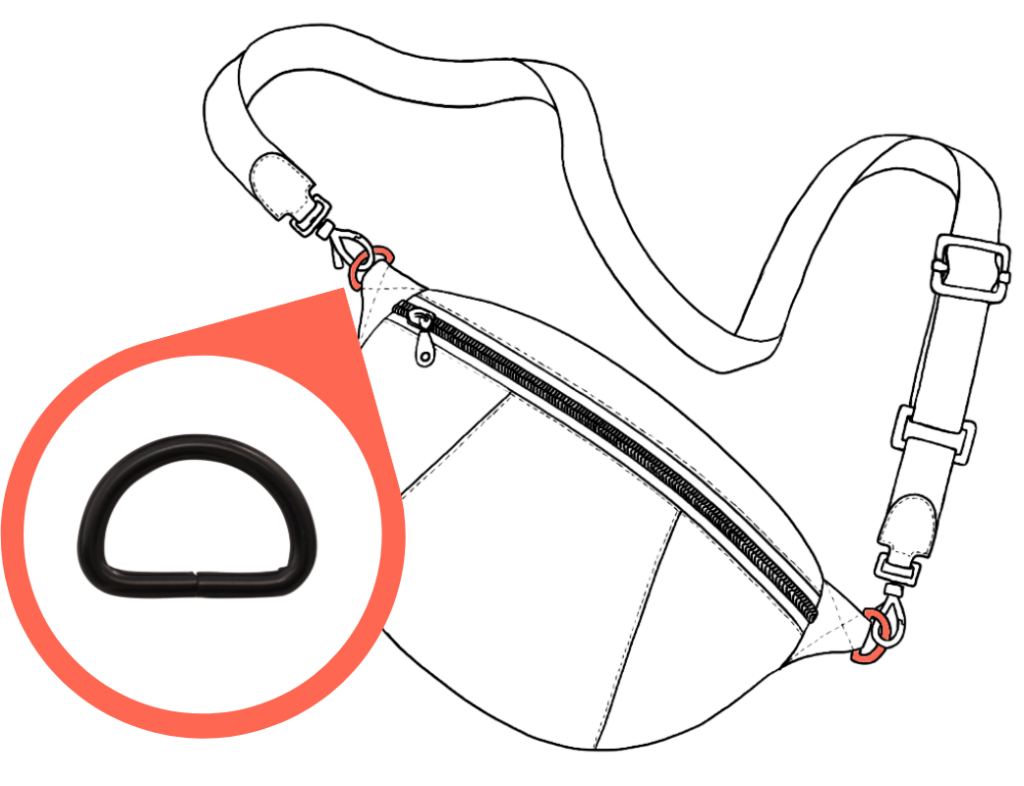
a bagmaking essential
D-rings owe their name to their shape, like the letter D (you will never forget that one any more, right?). They are primarily used for attaching straps, handles, or other elements to a bag or accessory.
Their semi-circular shape makes them particularly suitable for use in conjunction with snap hooks.
It is also referred to as: deering.
D-rings come in various sizes and dimensions. Common sizes range from 10 to 38mm (1/2 inch to 1 1/2 inches) in width.
When you buy a d-ring, the size that is indicated refers to the inner width of the ring. This is the most important measure since you have to match it to the width of the tab you intend to use to attach it to your bag.
Side note: A common misconception is that the size of a D-ring should equal the width of the bag strap you want to use. Since more often than not the strap is attached to a D-ring only indirectly, by means of a snap hook, this is definitely not a necessity. Especially when you opt for a wide strap, opting for the same size D-ring might not be very aesthetically pleasing.
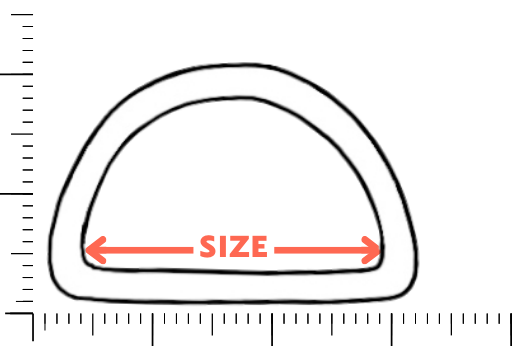
FAQ
Question: How much tolerance is acceptable for a good tab – D-ring fit?
Answer: A deviation up to 2mm both up or down is perfectly acceptable for a good fit. So e.g. a tab of between 23-27mm will usually fit into a 25mm D-ring. More space will make your D-ring susceptible to twisting.
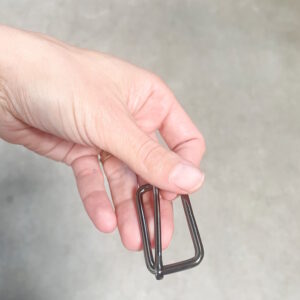
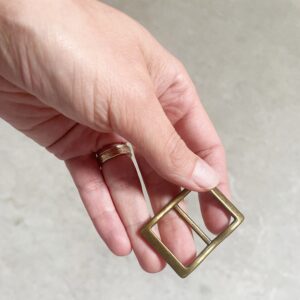
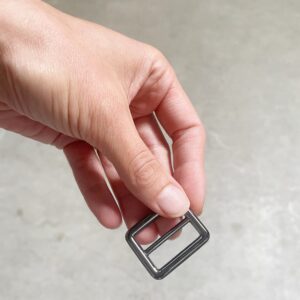
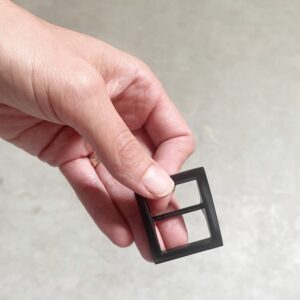
D-rings can be made from various materials, including metal (such as iron, brass, stainless steel, or zinc alloy), plastic, and even wood. The choice of material depends on the bag’s style, intended use, and design preferences.
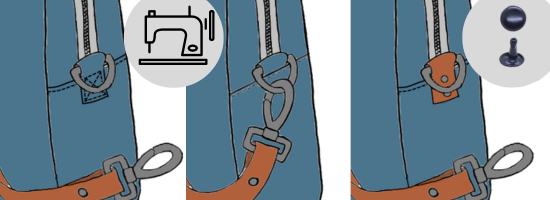
To attach D-rings to a bag or accessory, you typically need to create a fabric loop (also referred to as a tab) and then secure the D-ring within this loop. You can sew the tab into a seam, topstitch it onto the bag. A popular alternative, especially for thick layers, is using rivets.
